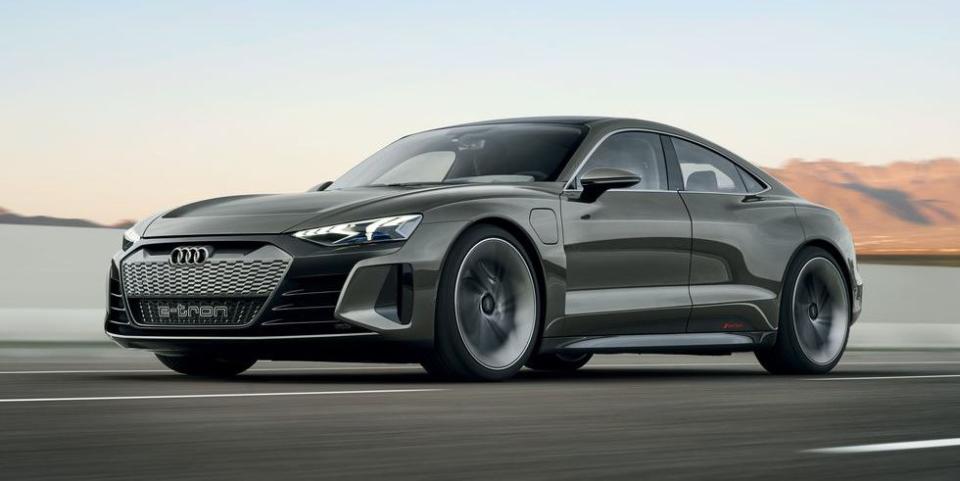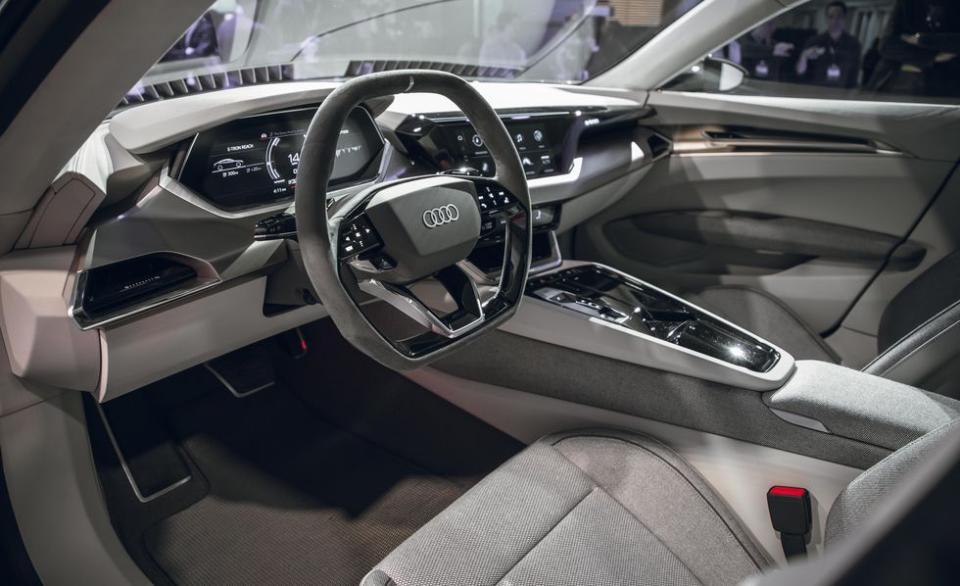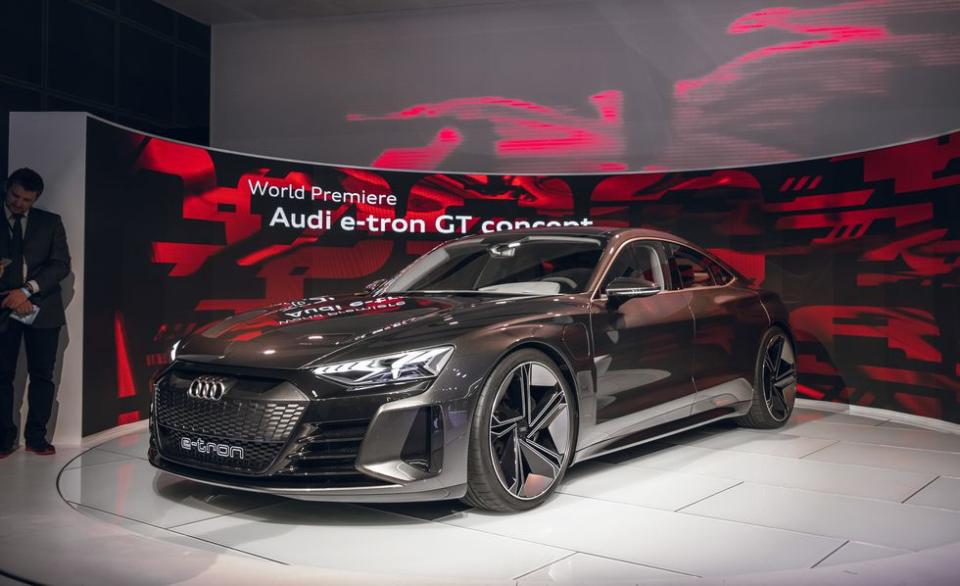Audi e-tron GT and Porsche Taycan Were a Collaborative Effort

It's no secret that the Audi e-tron GT concept shares certain elements with the upcoming Porsche Taycan, but it turns out the relationship began at inception. Marc Lichte, head of design at Audi, sat down with C/D at the Los Angeles auto show and explained just how intrinsically the pair are linked.
Lichte pointed out that while the SUV platform provides many packaging options for battery packs and motors, packaging a large one-96.0 kWh, in the case of the e-tron and the Taycan-presents specific challenges. To minimize overlap and consolidate costs, Audi chose to work in unison with its cousin Porsche early on. Specifically, the two share the basic platform, dubbed J1 in early Porsche internal parlance, that 96.0-kWh lithium-ion battery pack, two electric motors, and numerous chassis components. But it was more than just a hardware exchange; teams of engineers held meetings every three months to discuss the progress of the vehicles, share developments, and ensure certain each vehicle retained a unique identity. As a result, Lichte emphasized, the two vehicles offer "completely different driving dynamics."

While the platform dictates that the wheelbase and track are shared, the windshield is the only common exterior design component between the Taycan and the e-tron GT. Lichte promises a low drag coefficient for efficiency; he was not yet ready to reveal the figure, as minor changes are still in progress. Much consideration was given to the daylight openings because, Lichte said, significant range can be gained if air-conditioning use can be minimized. The 22-inch wheels are not only contemporary but also aid in managing the weight of the of the large, low-mounted battery pack. Speaking of which, the battery pack uses a bilevel design to provide for footwells without compromising the low-slung design. Overall, Lichte said, the interior is slightly less roomy than the A7, with which it shares nearly identical exterior proportions, but we found it easy to achieve a comfortable driving position. The e-tron GT makes no pretensions of being anything more than a four-passenger vehicle, however.

Lichte pointed out the challenges of imbuing an EV with character and identity: "It's not like today with an [internal combustion] engine, where the flat-six or the turbo V-6 provides the character. The challenge is to develop that kind of identity for the EV vehicles." Candidly, Lichte acknowledged his appreciation of Tesla, but noted it had a great advantage by starting with a clean-sheet design. "Audi has a rich history, and we need to marry our past to the future."
When asked how fluid the current platform was in battery capacity and total power output from the concept to the 2020 production model, Lichte grinned and said only, "The situation is evolving."
('You Might Also Like',)

 Yahoo Autos
Yahoo Autos 